Leadership fundamentally underpins the success of every high-performing organization. From my extensive experience at TIAA, Bank of America, and Home Depot, I’ve observed firsthand how dynamic leadership propels organizations forward and how its absence can precipitate their decline. Motivated by a passion for enhancing leadership capabilities, I conducted a detailed study to better understand the dynamics of leadership development, the role of executive coaching, and the prevalent challenges within these areas.
The study’s genesis
Utilizing my extensive network across multiple industries, I initiated this study to tap into a wide array of leadership practices. Conducting such a survey with a select group of 30 participants posed challenges, particularly in achieving a broad spectrum of data. However, the insights gained proved profound, showcasing the critical nature and impact of targeted leadership development.
Key findings from the study
The research highlighted a mixed success rate in promoting leaders to advanced roles. Notably, companies I identified as “4 and 5-star” in terms of their leadership development efficacy consistently implement robust strategies that contribute to their success. These companies contrast with “2 and 3-star” companies, where leadership development often relies too heavily on e-learning solutions that may not address deeper leadership competencies.
Leadership Challenges
Newly promoted leaders frequently struggle with strategic thinking, team leadership, and influencing others. These challenges underscore the necessity for tailored development strategies that go beyond basic training modules.
Effective Leadership Practices
The study identified talent reviews, succession planning, and performance evaluations as the most effective practices for selecting leaders. Leadership buy-in emerged as a crucial factor in the success of these practices, indicating that commitment at all levels significantly impacts the outcome.
Development Solutions
Job rotations and stretch assignments were highlighted as particularly effective leadership development strategies. Companies that employ these methods report a higher success rate in preparing leaders for advanced roles due to the practical experience and challenges they provide.
The Gap in Mid-Level Leadership Development
An unexpected finding was the gap in leadership development for mid-level managers, who often receive less attention compared to emerging or senior leaders. This oversight may lead to a bottleneck in leadership succession and needs addressing to ensure a continuous flow of leadership talent.
Evaluation of Practices
A noteworthy finding is that “4- & 5-star” companies are more diligent in measuring the success of their leadership development efforts compared to their less successful counterparts. This systematic evaluation helps in refining and optimizing leadership programs to meet specific organizational needs.
Executive Coaching Insights
Executive coaching is widely utilized and valued across various organizational levels. It is particularly prominent among emerging leaders, indicating a strategic investment in nurturing the next generation of executive talent. The varied cost and length of coaching engagements reflect the tailored approach companies take to address specific leadership development needs at different seniority levels.
Effective Strategies for Leadership Development
Job rotations and mentorship programs stood out as highly effective, often leading to significant improvements in leadership readiness and operational success. On the other hand, strategies that failed to align with specific leadership challenges tended to underperform, highlighting the importance of aligning development initiatives with actual needs.
Measuring the Impact of Leadership Development
The importance of measuring leadership development outcomes cannot be overstated. Yet, it remains an overlooked aspect in many organizations, which can lead to misaligned leadership strategies and wasted resources. Our study advocates for a more rigorous approach to evaluating the effectiveness of leadership programs, emphasizing the alignment of development efforts with business objectives and leader readiness.
Recommendations for future leadership development
Enhanced Focus on Mid-Level Managers
Increase investment in the development of mid-level managers to strengthen the middle tier of leadership, which is crucial for organizational resilience and succession planning.
Strategic Alignment of Development Programs
Ensure that leadership development programs are closely aligned with the actual challenges and needs of leaders at different levels, enhancing the relevance and impact of such initiatives.
Robust Evaluation Mechanisms
Implement more rigorous methods to measure the effectiveness of leadership development programs, using both qualitative and quantitative metrics to assess impact and guide continuous improvement.
Moving forward
I encourage you to engage with this ongoing research by participating in an extended survey to explore leadership practices more deeply. Your insights will enrich our understanding and contribute to shaping effective leadership development strategies globally. Join our research effort and help us drive meaningful change in leadership development practices.
Through this collaborative effort, we aim to elevate the effectiveness of leadership development programs, ensuring they not only meet current demands but also prepare organizations for future challenges. Click here to read the full report.
This article is part of the Precision Matters series. In the series, HR and L&D leaders share their expert strategies for utilizing Learning & Development tools to craft precise, impactful business outcomes and foster organizational growth.
Ready to turn insights into impact?


















